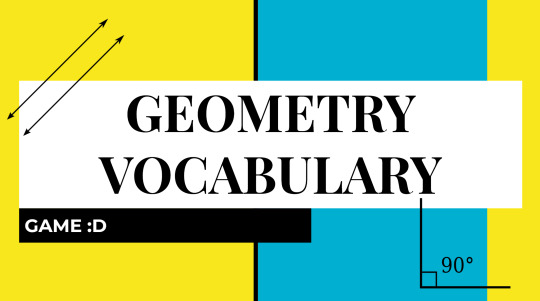Hi! My name is Faith and I'm finishing up my first year as a Language Assistant in Madrid. I work in English and Art classes at IES Joaquin Araujo in Fuenlabrada, outside of the city center. I'm from NJ, USA, 22 years old, and you can read more about me in my first post on this blog (at the bottom of this page). I will be posting tips, resources and lessons I've designed myself in addition to posts for the MOOC course. I hope you get some use out of my blog and apply yourself if you're still considering!
Don't wanna be here? Send us removal request.
Text
FINAL PROJECT - FAITH FRANZONIA
Color Theory + Zines Faith Franzonia - IES Joaquin Araujo, Fuenlabrada, Madrid Subject: Visual Arts Grade: 2 ESO (Flexible)

PPT LINK:
https://drive.google.com/file/d/1UxdDLhjKNRkFyKStqg_ECCfGsa2cZoUm/view?usp=sharing
This lesson is adaptable for many levels of Art as well as many different themes besides color theory. You could tweak this lesson to have students make a zine about texture, portraiture, or even collage! Zines are super flexible and students really can get creative and feel accomplished. --- Timing for Class 1: 50 minutes total - 25 minute presentation > Includes 10 minute demonstration of making zine - 25 minutes free work period Assign to finish as HW for next class, or add a class in between if you'd rather they work in class. Timing for Class 2: 50 minutes total - 15 minutes hanging up zines on wall - 5 minutes introducing how critiques will go - 30 minutes class critique Objectives: 1. Leave students with the ability, through this project and discussion, to put to use the vocabulary, concepts and skills they've learned about color theory. 2. Make students comfortable with giving and receiving constructive criticism about one another's art. 3. Students have a completed, clean zine at the end as their deliverable. Materials Needed: Unlined paper (A4 size or similar), scissors, colored pencils / markers / crayons, black pen or thin marker --- Teacher's Role: Handle any discipline for the class, translate or re explain if any signs of confusion arise, grade pieces Role as LA: Class 1: Review Color Theory concepts (if in an art class that is coming off of this) or introduce them, introduce project in a clear manner, alert teacher to let the students know beforehand the supplies that are going to be needed that day, and check around classroom as they are working (I like putting on instrumental music). Class 2: Presentation on critiquing art, focus on getting students to respond to the images being shown and to give their opinions. Then, hang up their work on a wall and hold a critique session for each piece using this vocabulary! Encourage students to not be afraid to say something they don't like about a piece, in a kind manner of course. And, duly, for the artist to be grateful for any criticism, because it will help them improve their work! How LA and Teacher are working to complement each other: Although you, as the LA, will be leading most of the discussion, make sure that your main teacher is aware of the entire project and see if you can tailor it to fit into their teaching schedule. Also, the more time they have to look over your project, the better they can assist the students as they know what you, as LA, are looking for. Evaluation: It will be up to the teacher if they decide for this project to count towards the final grade. In my case, my teacher wanted to as it was taking up 2 classes, but I would recommend splitting the percentage between class participation during critique and the actual physical project 50/50 or 25/75, respectively. How the students will know they have achieved the learning objectives: Students will know through hearing themselves give and receive criticism. This critique session acts as a way for them to practice speaking English, check to see if they've understood and correctly implemented color theory skills, and learn how to take and give constructive criticism, probably for the first time in this setting and on this scale. Instead of solely hearing thoughts from a teacher, hearing opinions from their peers is much more personal and impactful. How to respond to diverse learning styles and levels of achievement among students: Ensuring that you as LA and the main teacher spend time with, and focus on, students who seem to have some trouble grasping the more formal concepts while going around during the free in-class work time. Also, during critique, encouraging shyer students to state their thoughts by asking them questions that include vocabulary they can then use in their questions or comments on the piece that is being critiqued. --- Closing Thoughts The Final Project I've designed is both useful and original for my students in that it introduces them to zinemaking, a new medium for presenting work, as well as the practice of participating in a class critique. I was never in a formal critique until I got into University and I always wondered why it wasn't introduced before to me. Critiques are hands down one of the most influential ways to improve as an artist in two senses: 1. You learn how to read others' art and give constructive criticism. 2. You learn how your peers are reading your art and you learn how to take criticism. My Final Project uses a variety of teaching resources and techniques that allow students to listen, work in silence, and then speak to me and amongst each other. My combination of a brightly colored and thoughtfully designed presentation, space for them to work on their own, as well as a critique session will be sure to keep all students engaged and interested.
This work is licensed under a Creative Commons Attribution-NonCommercial-ShareAlike 4.0 International License.

0 notes
Text
2 ESO Presentation on MC Escher
https://docs.google.com/presentation/d/1jG58q5HY_4Dm9f3Tw_xEmVIyCKx4PqaonWFN6295xJY/edit#slide=id.ga35feaa9cb_0_81 This presentation really focuses on talking about art and explaining why we do or do not like a piece of art, through focusing on the work of MC Escher. Before starting I reviewed terms that they could use when describing work like: contrast, texture, size, medium, canvas, etc. My students said super insightful things about what each piece could mean, some even knowing how to connect them historically which was awesome to see!

0 notes
Text
1 ESO Geometry Vocab Review Game
https://docs.google.com/presentation/d/1pYSJ8BjT0M7BCCS7eIzycXlXJdJQM4PTcB-SjbubRMQ/edit#slide=id.p
In this class I designed this game as a PowerPoint to review Geometry vocabulary. It’s a great way to get them feeling a bit competitive and moving out of their seats.

0 notes
Text
2 ESO Presentation on Food, Measurements and Recipes
https://docs.google.com/presentation/d/1ulTR5DoY_vCKmrz9SERu3uxA9ZMgAeXsVWduHRRFb8s/edit#slide=id.ga2386c1b4d_0_29
This is one of my favorite classes. I designed this presentation for a 2ESO English class to supplement presentations the teacher already had taught the class. I find lessons to be most successful when they combine class conversation, lecture, vocabulary review, video, and then end with the explanation and/or starting of the project.

0 notes
Text
Resources List
Here are my favorite resources I’ve found for games, activities, lessons, questions, discussion prompts, etc. I hope you find them of use!
Jeopardy Labs https://jeopardylabs.com/
Games for lower levels https://www.abcya.com/
Games and activities for many levels https://eslgames.com/
Prezi + Canva (Great for interactive presentations) https://prezi.com/ https://www.canva.com/
Half a Crossword (Create your own crosswords where half of the class gets half of the answers and the other half the other - great to generate discussion) https://halfacrossword.com/ Conversation Prompts http://iteslj.org/questions/ Bamboozle (Similar to Kahoot but no phones required( https://www.baamboozle.com/
2 notes
·
View notes
Text

My typical lunch from the school cafeteria consists of “una tostada con tomate y un café con leche de almendras.” I love when the sun is out and I’m able to relax between classes and chat with the other auxiliares and teachers.
0 notes
Text
Portfolio Pt. 2
5 TIPS FOR FIRST TIME AUXILIARES
You will fail Sorry to say, but some classes will leave you feeling absolutely terrible haha. Either the class wasn’t paying attention, you lost your main point, or you ran out of time or maybe were left with time to fill on the spot, it happens. The best way to overcome this is to reflect on what went wrong, how you can improve, and to come to the next class prepared.
Preparation is key Coming into a class with all of my activities and materials prepared, the time I think each will take, and extra activities to pull out if extra time is left at the end, makes going into each class 100x easier.
You will overcome teaching-anxiety I would identity myself as not the strongest public speaker, walking into class the first day and having to stand in front of all the students was terribly nerve-wracking, to say the least. Little did I know that teaching would help me overcome a bit of this fear and instill confidence in me I didn’t know I had. Just physically standing in front of a class over and over again is something I had to and did get used to. And when the first lesson of yours works, it feels great and instills even more confidence in you that you are meant to be here and have something to share with the students.
Save your resources I started out by trying to fully create every presentation, game, speaking activity, thinking that that was what I was required to do. Little did I know that most teachers do not, can not, do that. They reuse their own materials and even take some from the plethora of teaching blogs that are available online. Once I tapped into this information, I was able to compile the most useful and successful websites, Youtube channels, and teaching blogs which both saved time and made both students and myself more engaged during class.
Get to know the Teachers + Staff Feeling part of a community at your school is key! If you aren’t strong enough in Spanish, it’s okay! There are always teachers that are willing to speak in English with you during a shared break to practice (or you could have a language exchange which I do.) I recommend asking your Language Coordinator to send out an email asking if anyone is interested in speaking in English with you, or putting up a poster. It is the perfect way to take advantage of those breaks, to make some friends, and to have someone in addition to the teachers that you already work with to smile at in the halls. :)
0 notes
Text
Portfolio Pt. 1
Faith Franzonia - 22 - NJ, USA IES Joaquin Araujo, Fuenlabrada, Madrid English + Art in English Auxiliar
“The test of a good teacher is not how many questions he can ask his pupils that they will answer readily, but how many questions he inspires them to ask him which he finds it hard to answer.” -Alice Wellington Rollins.
Upon my first months as an English assistant teacher here in Madrid, Spain, I have found that my teaching philosophy is most in line with the aforementioned quote by Rollins. This has been my first attempt at teaching and on arriving my first day to the school I was overwhelmed, to say the least, when being thrown in front of a class for the first time, 20 students waiting for me to introduce myself. With more and more classes, I found it to become easier, almost second-nature, to stand up in front of the class and present a lesson or need to improvise when necessary.
The most rewarding part of teaching has been when I can sense the students fully engaged in my presentation or class discussion, so much so that sometimes they ask questions that make even myself have to think. To tap into a student’s curiosity and learn, even as the teacher, from the questions they present you with based on the material you’ve curated for the class, is incredibly fulfilling. It definitely doesn’t happen with every class, but that makes it even more special when it does.
My goal as a teacher going into her second semester of school is to bring in materials, activities and presentations that have the potential to get my students interested and asking thoughtful questions that even stump me.
About IES Joaquin Araujo
My school placement is in Fuenlabrada, the outskirts of Madrid center, with a commute totaling about 50 minutes there and back from my apartment. I’ve found that time commuting to be suitable for reading, listening to podcasts, but sometimes just zoning out before or after the school day so I don’t mind it being a bit lengthy. The school is composed of 1ESO, 2ESO and Bachillerato levels and obviously is a bilingual school! I work with all levels, predominantly in Art classes, totaling 16 classes per week. Some classes overlap so I will teach the same class English and Art in the same week. With Covid, class sizes have been capped at around 20, but some only include as few as 7 students. Class size is a big determiner of my ability to reach all of the students when teaching.
All of the levels have their own upsides and downsides. With Bachillerato, to whom I just teach English, I can definitely hold a more in-depth class conversation and they’re more independent with their grasp on the language and topics they’re able to discuss. The downside is that there can be a mixed level of students in these classes, so sometimes someone who didn’t come from a bilingual school previously can feel left behind. Even if there is just 1 student, I find myself constantly trying to ensure they feel included and able to contribute. 1ESO and 2ESO are definitely more rowdy on average, but I have seen them to be more enthusiastic about learning and sometimes even more creative! Some even have higher English levels than Bachillerato students which was surprising.
Some of my favorite aspects of my school placement include the cafeteria (my classic order is a café con leche de almendras and tostada con tomate), the teachers I work with, and the focus on the arts in my school.
The school culture in Spain seems to be more relaxed than what I’m accustomed to in the US. There is no dress code for teachers nor students and although there is definitely discipline, it is never handled with anger, as I witnessed growing up in the US school system. At most, a level of sternness, but there is always respect and sometimes compromise between teacher and student which I very much appreciate.
0 notes
Text
Hello!

Hi everyone! My name is Faith, I'm 22 years old and Fall 2020 has been my first year as a Language Assistant in Fuenlabrada, Madrid, Spain! I grew up in New Jersey, USA where I also went to University and studied Journalism and Visual Arts. I work at IES Joaquin Araujo in Fuenlabrada with 1ESO, 2ESO and Bachillerato in Art in English and English classes.
I hope my posts will help you with your teaching journey here in Spain. I will be posting some of my favorite resources, lesson plans I’ve made, general tips and my final project which I’m super excited about!
I also plan on posting my thoughts about moving abroad and teaching during a global pandemic and my experiences around that!
4 notes
·
View notes